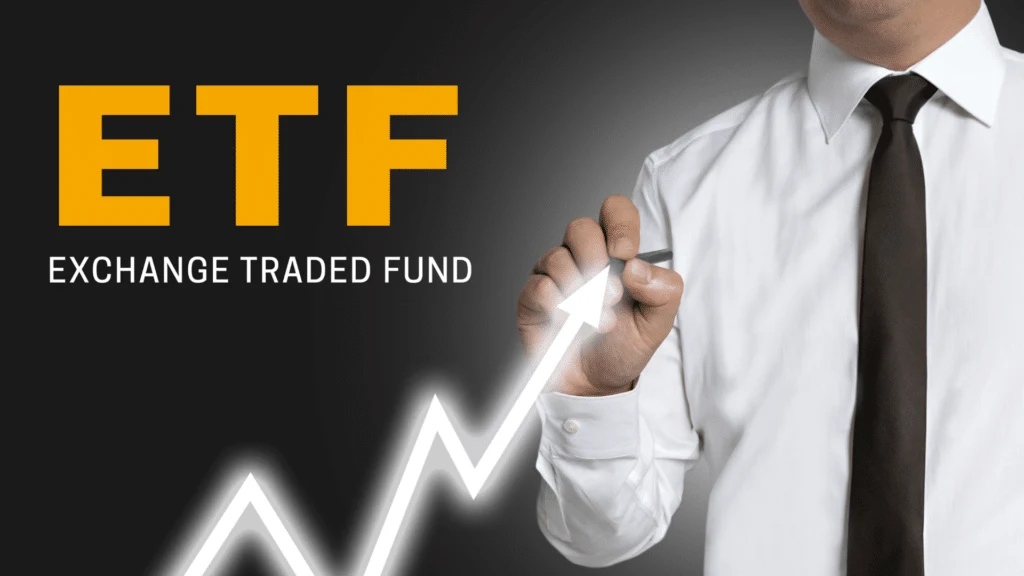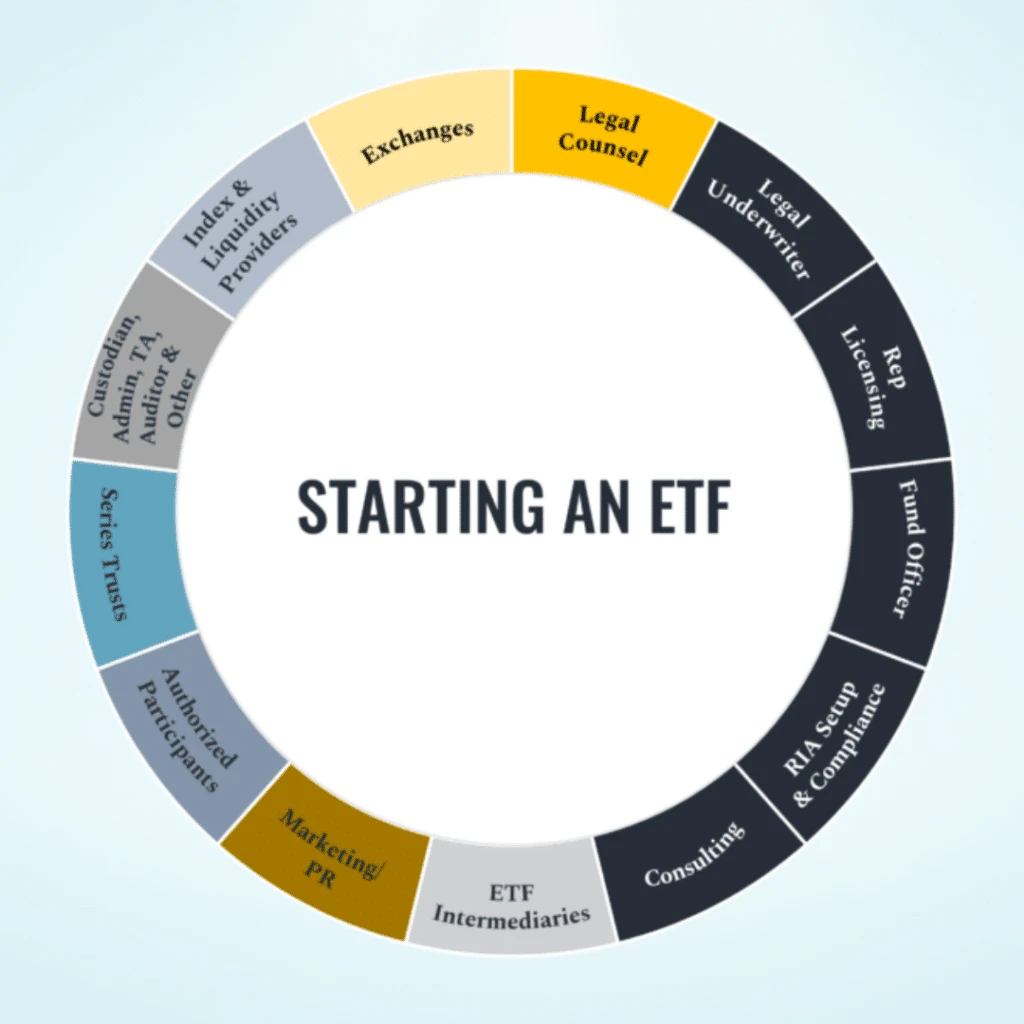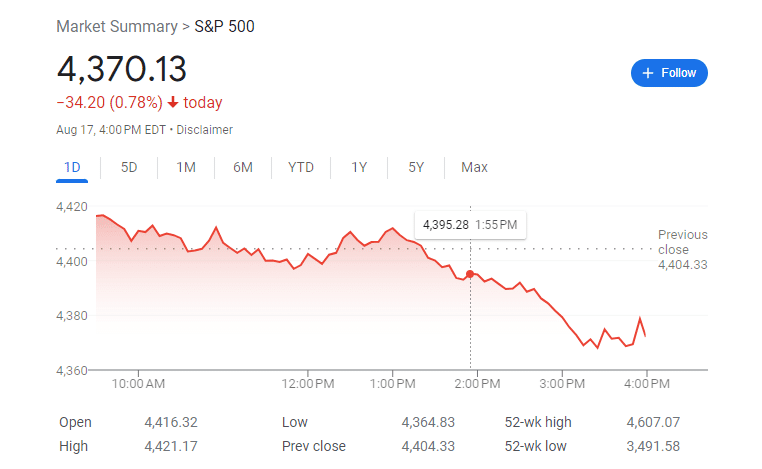What is an ETF?
An Exchange Traded Fund (ETF) is a basket of securities. Exchange-traded means that it can be traded on a stock exchange.
The Long Definition
An ETF is a pooled investment instrument. Instead of one stock or asset (security), it consists of a ‘basket-full’ of securities.
The basket can contain stocks, bonds, commodities, fiat currencies, and cryptocurrencies.
The share price of an ETF changes in real time with the value of the underlying assets.
Similar to stocks, ETFs are traded on stock exchanges.

Understanding ETFs
The financial market has different types of securities. These include bonds and stocks from companies and commodities like gold and silver. There are also cryptocurrencies like Bitcoin (BTC), ether (ETH), and the Binance Coin (BNB). And there are fiat currencies like the dollar, pound, and euro.
Typically, these are available for trading as individual assets. For example, Apple stocks trade separately from Samsung and Google stocks. Each company’s stock is its own underlying asset with its own price.
An ETF works by bringing different types of securities together. It is a fund, which means it collects different assets and pools them. This pool is then divided into shares that people can trade on a stock exchange.
For example, one ETF can have stocks from Google, Apple, Samsung, and other tech companies. So, while a typical Apple stock has only one underlying asset, itself, a share from such an ETF has multiple underlying assets.
The price of an ETF is derived from that of the underlying assets. It tracks the performance of the different assets in its basket of securities.
How is an ETF Created?
The company behind an ETF is known as the ETF sponsor. They develop the concept of the fund. This involves choosing what assets the ETF will track and how the whole thing will be structured and managed.
The sponsor officially starts the process of obtaining permission. In the US, this means filing a plan with the U.S. Securities and Exchange Commission (SEC). Once approved, the next task is finding an authorized participant (AP).

An AP is a registered, self-clearing broker or dealer. They can be a market maker or a large institutional investor. They are responsible for regulating the supply of ETF shares in the secondary market.
During creation, the AP assembles all the underlying securities the sponsor needs for the ETF. These are then wrapped into a single bundle before being split into shares. The newly created shares are then released into the secondary market for trading purposes.
Types of ETFs
Generally, ETFs can be split into various categories according to how they are managed and the types of assets they contain. There are also special ETFs that use certain investment techniques like shorting and leveraging.
According to Management
ETFs can be passively or actively managed. Passively managed ETFs track the performance of a particular group of assets. This can be a basket of commodities or a stock index, like the S&P 500.
A passive ETF aims to replicate the performance of the underlying index. For example, an ETF tracking the S&P 500 will try to provide around the same returns offered by the index. On its own, the portfolio mimics the performance of the S&P 500. And since this is the goal, there is no need to actively manage the portfolio.
Actively managed ETFs are a relatively recent addition to the market. These don’t target a fixed index of securities. Rather, you have a portfolio manager who regularly decides what securities to add or remove from the portfolio. The securities’ performances determine how this is done. This is done based on the performance of the securities.
Generally, actively managed ETFs offer higher returns than passive ETFs. However, since they require the services of a portfolio manager, they come at a higher cost.

According to assets
There are many different assets an ETF can hold. To this end, ETFs are classified as:
- Stock ETFs: Contains stock from a variety of companies. The SPDR S&P 500 ETF mentioned earlier is a good example.
- Currency ETFs: Track the performance of the most popular international currencies. They allow investors to gain exposure to forex without directly trading in the forex market.
- Crypto ETFs: There are also currency ETFs that track cryptocurrency, like the Bitcoin ETF.
- Bond ETFs: These hold corporate, government, and/or municipal bonds. Note that, unlike the bonds they hold, bond ETFs don’t have a maturity date.
- Commodity ETFs: These hold commodities like gold and crude oil in their basket of assets.
- Industry/Sector ETFs: Stock ETFs that focus on a specific sector/industry. They include securities from companies in that particular sector. For example, blockchain ETFs track the performance of companies involved in blockchain technology.
The investment technique
Here, you have inverse ETFs and Leveraged ETFs. Inverse ETFs bet against the market by shorting stocks. Shorting involves selling stocks and repurchasing them later at a lower price. The difference is kept as profit.
On the other hand, leveraged ETFs try to amplify gains by leveraging. For instance, if the tracked index rises by 1%, a 3x leveraged ETF will return 3x.
Pros and Cons of ETFs
The biggest advantage of ETFs is that they offer a diversified portfolio. This is good for risk management. It helps reduce losses because the poor performance of one asset is offset by the gains of others.
Even better, such a portfolio comes without requiring lots of work from the investor. In one buy transaction, an investor gets stocks from different companies. Without an ETF, you would have to buy each security individually. This would be a time-consuming and costly affair.
And speaking of costs, ETFs can be cheaper than alternative investment options. Take commodity ETFs that track valuable items like gold and crude oil. If you went for real gold, you would have to incur storage, insurance, and security costs.
On the flip side, some ETFs can be costly. This is the case for actively managed stock ETFs, which require a portfolio manager.
Exchange Traded Fund Examples
Some popular ETFs are:
- SPDR S&P 500 ETF: This is the oldest, most popular ETF. It tracks the performance of the S&P 500. The S&P 500 is a weighted index of the leading 500 companies on stock exchanges in the US.
- Invesco DB Commodity Index Tracking ETF (DBC): This ETF tracks the performance of the Deutsche Bank Liquid Commodity Index. The index includes futures contracts for a variety of precious metals, agricultural commodities, and energy resources.
- iShares Core U.S. Aggregate Bond ETF (AGG): This ETF tracks the performance of the Barclays U.S. Aggregate Bond Index. The index includes investment-grade bonds issued by the U.S. government, corporations, and various mortgage-backed securities issuers.
- Global X Blockchain ETF (BKCH): This passively managed ETF tracks companies involved in one way or the other in blockchain technology. These include crypto exchanges, mining companies, and those researching and developing new blockchain applications.

History of ETFs
TheToronto Stock Exchange created the first Exchange Traded Fund in Canada in 1990. It was known as the Toronto Index Participation Units (TIPs 35).
In the US, the first ETF was launched in 1993 by State Street Global Investors. It was called the S&P 500 Trust ETF (SPDR or “spider”). It was very popular and set the stage for more ETFs to reach the market. The SPDR is still running to date, making it the oldest surviving ETF.
